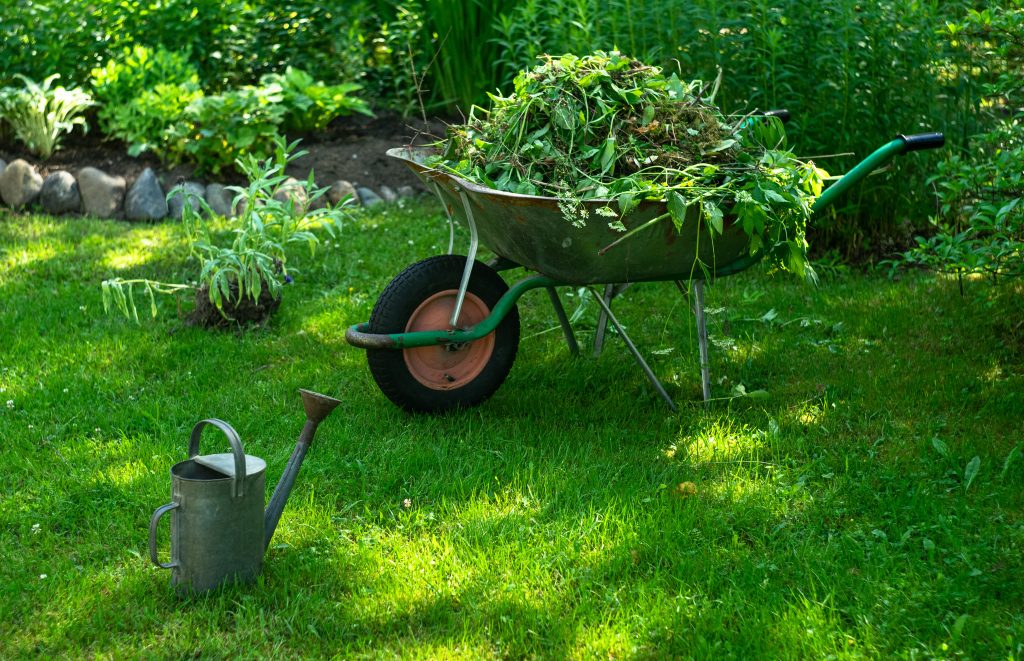In gardens, ornamental plants are often grown for their flowers, foliage, or overall appearance; useful plants, such as root vegetables, leaf vegetables, fruits, and herbs, are grown for consumption, for use as dyes, or for medicinal or cosmetic use.
Gardening ranges in scale from fruit orchards, to long boulevard plantings with one or more different types of shrubs, trees, and herbaceous plants, to residential back gardens including lawns and foundation plantings, and to container gardens grown inside or outside. Gardening may be very specialized, with only one type of plant grown, or involve a variety of plants in mixed plantings. It involves an active participation in the growing of plants, and tends to be labor-intensive, which differentiates it from farming or forestry.
Types of gardening
Residential gardening takes place near the home, in a space referred to as the garden. Although a garden typically is located on the land near a residence, it may also be located on a roof, in an atrium, on a balcony, in a windowbox, on a patio or vivarium.
Gardening also takes place in non-residential green areas, such as parks, public or semi-public gardens (botanical gardens or zoological gardens), amusement parks, along transportation corridors, and around tourist attractions and garden hotels. In these situations, a staff of gardeners or groundskeepers maintains the gardens.
- Indoor gardening is concerned with the growing of houseplants within a residence or building, in a conservatory, or in a greenhouse. Indoor gardens are sometimes incorporated as part of air conditioning or heating systems. Indoor gardening extends the growing season in the fall and spring and can be used for winter gardening.
- Native plant gardening is concerned with the use of native plants with or without the intent of creating wildlife habitat. The goal is to create a garden in harmony with, and adapted to a given area. This type of gardening typically reduces water usage, maintenance, and fertilization costs, while increasing native faunal interest.
- Water gardening is concerned with growing plants adapted to pools and ponds. Bog gardens are also considered a type of water garden. These all require special conditions and considerations. A simple water garden may consist solely of a tub containing the water and plant(s). In aquascaping, a garden is created within an aquarium tank.
- Container gardening is concerned with growing plants in any type of container either indoors or outdoors. Common containers are pots, hanging baskets, and planters. Container gardening is usually used in atriums and on balconies, patios, and roof tops.
- Community gardening is a social activity in which an area of land is gardened by a group of people, providing access to fresh produce, herbs, flowers and plants as well as access to satisfying labor, neighborhood improvement, sense of community and connection to the environment.Community gardens are typically owned in trust by local governments or nonprofits.
- Garden sharing partners landowners with gardeners in need of land. These shared gardens, typically front or back yards, are usually used to produce food that is divided between the two parties.
- Organic gardening uses natural, sustainable methods, fertilizers and pesticides to grow non-genetically modified crops.
- Biodynamic gardening or biodynamic agriculture is similar to organic gardening, but it includes various esoteric concepts drawn from the ideas of Rudolf Steiner, such as astrological sowing and planting calendar and particular field and compost preparations.
- Commercial gardening is a more intensive type of gardening that involves the production of vegetables, nontropical fruits, and flowers from local farmers. Commercial gardening began because farmers would sell locally to stop food from spoiling faster because of the transportation of goods from a far distance. Mediterranean agriculture is also a common practice that commercial gardeners use. Mediterranean agriculture is the practice of cultivating animals such as sheep to help weed and provide manure for vine crops, grains, or citrus. Gardeners can easily train these animals to not eat the actual plant.



